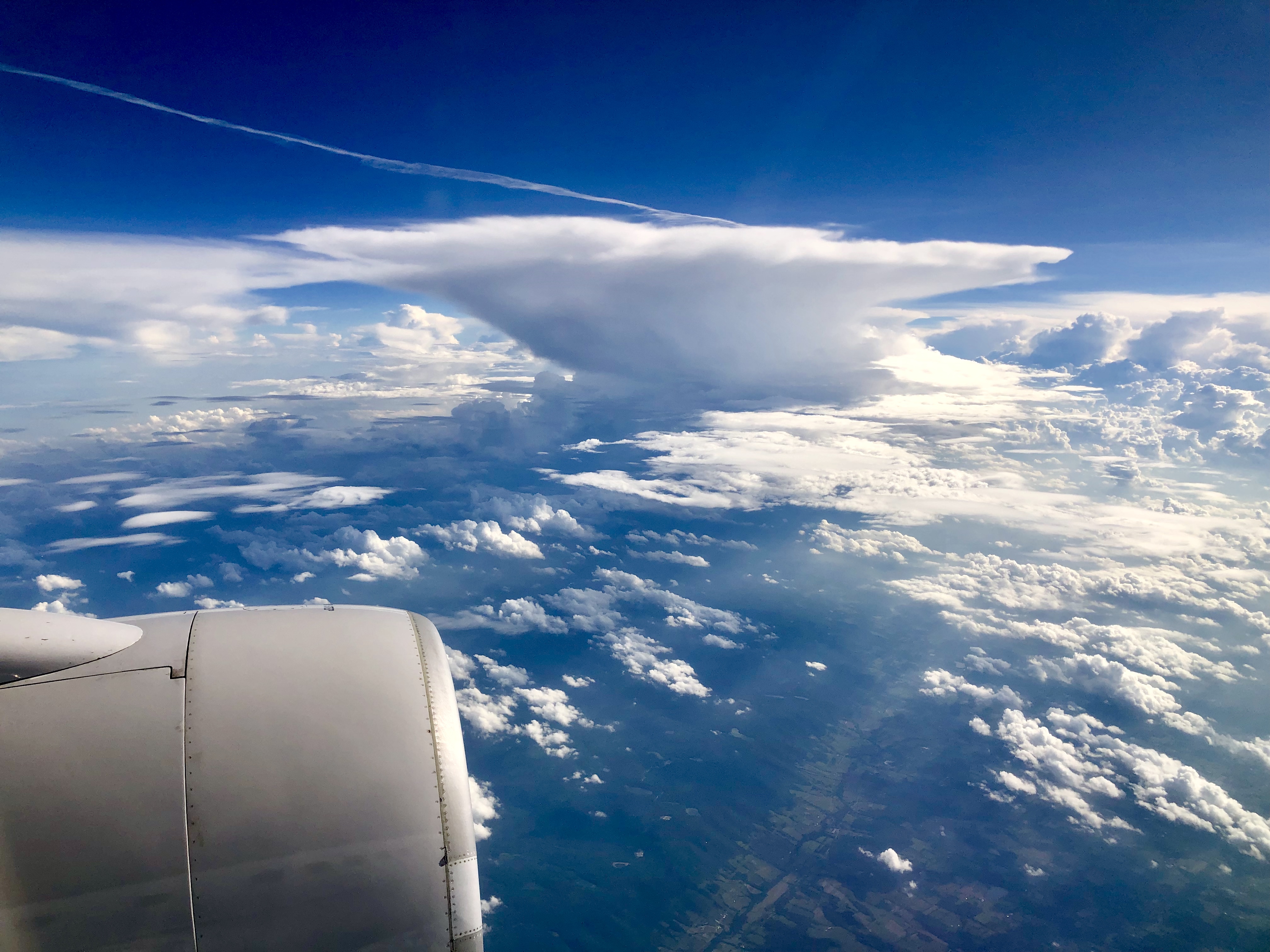We pilots love this cartoon by Gary Larson! I have never met anyone who said they LIKED turbulence (non-pilot that is), have you? I will discuss turbulence specifics in a future article but I thought for now you would want the rules of thumb by Captain Laura to help you avoid the rough air as much as possible!
1. Always fly in the early mornings if possible. Yes I know, some of us are not early risers but if you want smooth air, this is when you will find it. (Hint: you may want to offer coffee to the pilots and flight attendants when you see them in the gate area since they too will be groggy!) The air temperature, density, and pressure differentials are at a minimum in the early morning so winds have not had a chance to kick up and churn too much. Convective activity is not as prevalent so now is the time to fly! (Another great factor in early morning flying is that your jet is usually in place waiting for you since it came in the night before!)
2. Yes, bigger is better! (I am referring of course to jets and rides!) Just as a comparative between a large cruise ship and a small boat on the ocean, or a large vehicle and a small car on the road, your rides will be much smoother in a larger aircraft. When you are booking your tickets, look to see what type of aircraft the airline is using for that route. You may want to go an hour earlier or later if you have a choice of a bigger jet and you have a bit of flexibility.
3. Time of the year can play a roll in literally, the roll! If are not flying frequently and you have seasonal options as to when you book your trip, choose times of the year that will be more weather tame. For example, the midwest and the southeast get some incredibly strong thunderstorm activity (sometimes on a daily basis) and usually in the afternoon and early evenings during the summer. The air can be very tumultuous because the cool, dense air from the north clashes with with the warm, moist air from the ocean and gulf. Late fall, winter, and early spring during the mornings are smoothest in these areas. The winter in the northeast can bring snow showers and wreak havoc on travel plans. Rides in the winter over the Pacific ocean can be rough because of the strong winter jet streams that dip down creating variations of air intensities. Spring, summer and fall is best in the mornings for these areas.
4. Mountain areas can create a bumpy travel experience. Those of you who live in these locations and travel often know what I am talking about. As the winds pick up in the afternoons, they are tossed around by the structures of the surrounding terrain. Morning flying is best for these regions.
Start keeping an eye on “The Weather Channel” a few days before your flight and remember these rules when it comes to choosing your connecting flights and hubs as well. As pilots, we review the weather meticulously. We also coordinate with our dispatchers as to the best routing, altitude, fuel, etc. for each leg we fly. If there are areas of known or forecast turbulence, we change our routing, switch our altitudes, add more fuel, etc. before we even takeoff. Once en-route, we give reports of any adverse rides to each other and we collaborate with air traffic controllers as to the best path for the best rides. I hope this helps gain you some velvet air!
Smooth rides and blue skies!
Laura



I found this very helpful…Is there a good time to fly from Midwest or East coast
to Europe? France or Holland?
Thank you for your great information.
Hi Simone, I am so glad you found this helpful! I would say that the best times to fly to Europe would be fall or spring. The jet stream is not so strong for winter turbulence and the summer thunderstorms are not so present during these times. As far as time and days, there is less traffic and more open seats Tuesdays, Wednesdays and Saturdays. Smoother flights for you will be late evening and early morning!